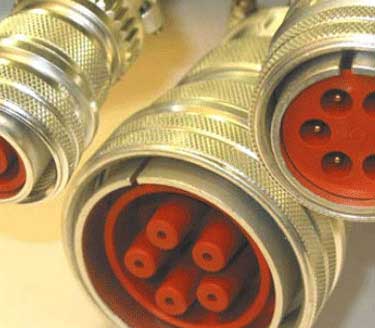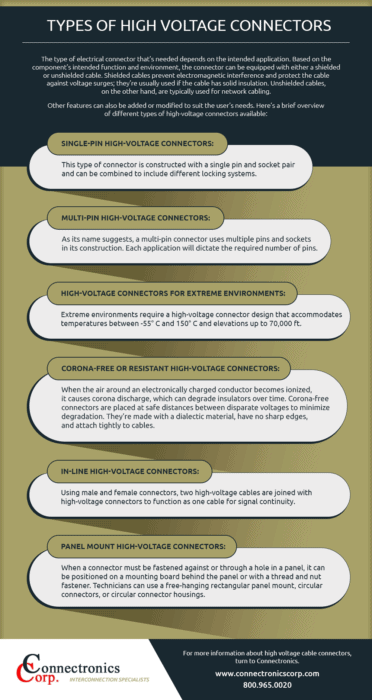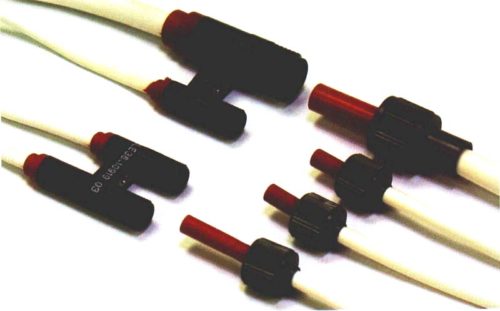 High voltage connectors are required in a broad range of industries, including aerospace, nuclear, defense, energy, medical, and many other fields. Design engineers must consider the environment and intended purpose where the connectors will operate to maximize safety, longevity, performance, and reliability while minimizing the chances of insulator failure. The types of materials the connector will be exposed to also plays a role in determining the system’s design.
High voltage connectors are required in a broad range of industries, including aerospace, nuclear, defense, energy, medical, and many other fields. Design engineers must consider the environment and intended purpose where the connectors will operate to maximize safety, longevity, performance, and reliability while minimizing the chances of insulator failure. The types of materials the connector will be exposed to also plays a role in determining the system’s design.
Types of High-Voltage Connectors
The type of electrical connector that’s needed depends on the intended application. Based on the component’s intended function and environment, the connector can be equipped with either a shielded or unshielded cable. Shielded cables prevent electromagnetic interference and protect the cable against voltage surges; they’re usually used if the cable has solid insulation. Unshielded cables, on the other hand, are typically used for network cabling.
 Other features can also be added or modified to suit the user’s needs. Here’s a brief overview of different types of high-voltage connectors available:
Other features can also be added or modified to suit the user’s needs. Here’s a brief overview of different types of high-voltage connectors available:
- Single-Pin High-Voltage Connectors: This type of connector is constructed with a single pin and socket pair and can be combined to include different locking systems.
- Multi-Pin High-Voltage Connectors: As its name suggests, a multi-pin connector uses multiple pins and sockets in its construction. Each application will dictate the required number of pins.
- High-Voltage Connectors for Extreme Environments: Extreme environments require a high-voltage connector design that accommodates temperatures between -55° C and 150° C and elevations up to 70,000 ft.
- Corona Resistant or Resistant High-Voltage Connectors: When the air around an electronically charged conductor becomes ionized, it causes corona discharge, which can degrade insulators over time. Corona Resistant connectors are placed at safe distances between disparate voltages to minimize degradation. They’re made with a dialectic material, have no sharp edges, and attach tightly to cables.
- In-Line High-Voltage Connectors: Using male and female connectors, two high-voltage cables are joined with high-voltage connectors to function as one cable for signal continuity.
- Panel Mount High-Voltage Connectors: When a connector must be fastened against or through a hole in a panel, it can be positioned on a mounting board behind the panel or with a thread and nut fastener. Technicians can use a free-hanging rectangular panel mount, circular connectors, or circular connector housings.
High-Voltage Connector Design Considerations
 High voltages place extreme stress on all device components, which presents certain challenges. An energy surge can cause catastrophic failure in connections that would otherwise function adequately with a lower voltage.
High voltages place extreme stress on all device components, which presents certain challenges. An energy surge can cause catastrophic failure in connections that would otherwise function adequately with a lower voltage.
Corona Discharge
When the electrical field around a conductor reaches 300 V. or higher and becomes conductive, but isn’t high enough to cause arcing, it creates corona discharge. If there are gaps or voids inside dielectric connectors, the air can also ionize and contribute to corona discharge. Over an extended period, corona discharge will cause dielectric breakdown.
Arcing
An electrical breakdown of gas through normally nonconductive mediums (including the air) is called arcing. Arcing produces an ongoing plasma discharge that can be destructive: The electrical current can produce carbon-filled voids, making the dielectric unable to withstand high voltages.
High-Voltage Clearance and High-Voltage Creepage
Separation within specified distances is vital to maintain efficacy and safety in high-voltage connections. These critical distances are called clearance or creepage and will vary according to safety specifications for each application.
High-voltage connectors protect electronic devices and ensure safe operation, but designing and manufacturing these products requires considerable care. Depending on your project and its environment, an engineer can help you select features, such as shielded or unshielded cables, and determine how many pins to include in the connectors. They can also help you select a mounting method and answer any questions you have about operating your equipment safely.
Turn to Connectronics for Specialty High Voltage Connectors
When high-voltage connectors are required, you need an electrical parts manufacturer that has the experience and technology you can depend on. Connectronics Corp. has over 30 years of experience manufacturing custom connectors and interconnection systems and is AS9100D-certified with an ISO9000:2015 management system. Contact us for more information about our connectors and cable services or request a quote today.






